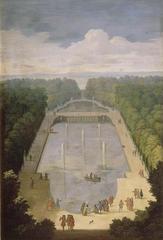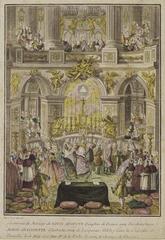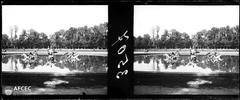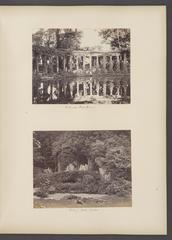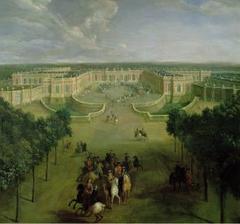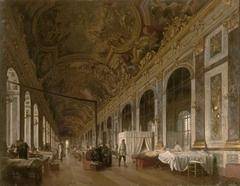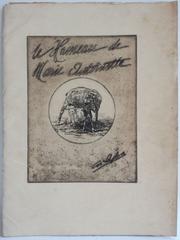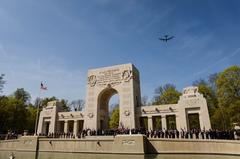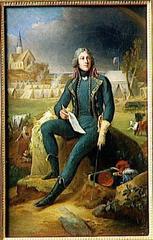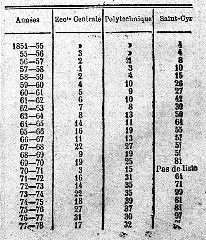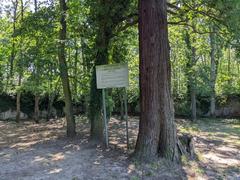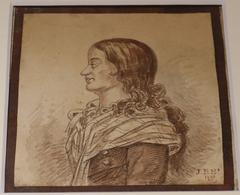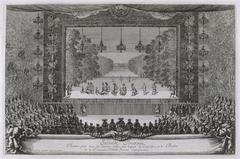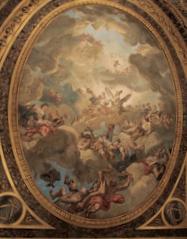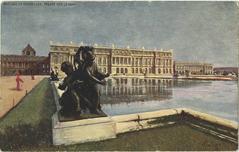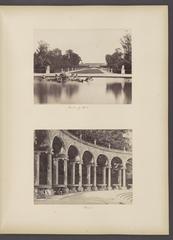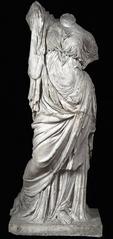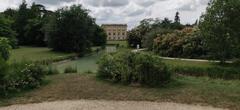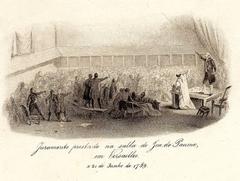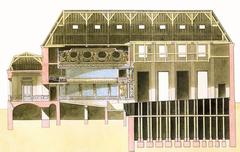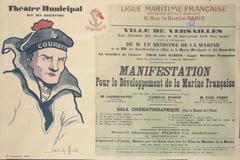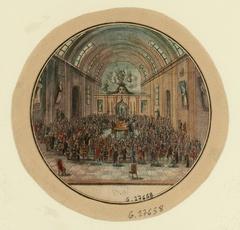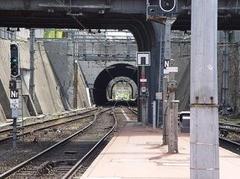Grande Écurie in Versailles: Visiting Hours, Tickets, and Historical Significance
Date: 18/07/2024
Introduction
The Grande Écurie, or Great Stables, located at the Palace of Versailles, is an architectural and historical marvel that captivates visitors with its rich legacy and grandeur. Commissioned by Louis XIV in 1679 and completed in 1682 by the renowned architect Jules Hardouin-Mansart, the Grande Écurie is more than just a stable—it is a symbol of royal power, opulence, and the king’s passion for equestrian arts. The structure’s historical significance is deeply intertwined with the French monarchy, serving as a housing and training ground for the royal steeds and the king’s elite riding academy, the Écuyers du Roi. This guide offers a comprehensive look into the Grande Écurie, detailing its historical importance, architectural brilliance, and practical visitor information, making it an essential read for history enthusiasts, architecture admirers, and cultural explorers alike. (source)
Table of Contents
- [Historical Significance - A Legacy of Equestrian Excellence](#historical-significance---a-legacy-of-equestrian-excellencehistorical-significance---a-legacy-of-equestrian-excellence)
- [Birth of an Architectural Marvel](#birth-of-an-architectural-marvelbirth-of-an-architectural-marvel)
- [A Symbol of Royal Power](#a-symbol-of-royal-powera-symbol-of-royal-power)
- [Architectural Masterpiece - Design and Layout](#architectural-masterpiece---design-and-layoutarchitectural-masterpiece---design-and-layout)
- [Symmetry and Grandeur](#symmetry-and-grandeursymmetry-and-grandeur)
- [A Facade of Elegance](#a-facade-of-elegancea-facade-of-elegance)
- [Inside the Stables - Functionality Meets Opulence](#inside-the-stables---functionality-meets-opulenceinside-the-stables---functionality-meets-opulence)
- [The Riding School - A Stage for Equestrian Arts](#the-riding-school---a-stage-for-equestrian-artsthe-riding-school---a-stage-for-equestrian-arts)
- [Beyond the Stables - A Hub of Activity](#beyond-the-stables---a-hub-of-activitybeyond-the-stables---a-hub-of-activity)
- [Visitor Information - Hours, Tickets, and Accessibility](#visitor-information---hours-tickets-and-accessibilityvisitor-information---hours-tickets-and-accessibility)
- [Visiting Hours](#visiting-hoursvisiting-hours)
- [Ticket Prices](#ticket-pricesticket-prices)
- [Accessibility](#accessibilityaccessibility)
- [Travel Tips and Nearby Attractions](#travel-tips-and-nearby-attractionstravel-tips-and-nearby-attractions)
- [Conclusion](#conclusionconclusion)
- [Frequently Asked Questions (FAQ)](#frequently-asked-questions-faqfrequently-asked-questions-faq)
Historical Significance - A Legacy of Equestrian Excellence
The Grande Écurie stands as a testament to the grandeur and opulence of the reign of Louis XIV, the Sun King. More than just a place to house horses, this structure embodied the king’s passion for equestrian arts and their crucial role in the image and power of the French monarchy.
Birth of an Architectural Marvel
Commissioned in 1679 and completed in 1682, the Grande Écurie was designed by the renowned architect Jules Hardouin-Mansart, who also masterminded the Palace’s Hall of Mirrors and the Grand Trianon. The speed of construction itself speaks to the importance Louis XIV placed on this project.
A Symbol of Royal Power
Horses, during Louis XIV’s reign, were not merely animals but symbols of power, prestige, and military might. The Grande Écurie served a multifaceted purpose:
- Housing Royal Steeds - The stables housed over 700 horses, including the king’s personal mounts, those used for hunting and ceremonial occasions, and the steeds of the royal court.
- Training Ground for Élite Riders - It served as the training ground for the Écuyers du Roi, the king’s elite riding academy, renowned throughout Europe for their equestrian skills.
- A Showcase of Architectural Prowess - The building itself, with its imposing facade, symmetrical design, and lavish decorations, was a statement of the king’s wealth and power, intended to awe visitors and foreign dignitaries.
Architectural Masterpiece - Design and Layout
The Grande Écurie is a masterpiece of French classical architecture, mirroring the grandeur of the Palace itself.
Symmetry and Grandeur
The building is laid out in a U-shape, flanking a vast courtyard paved with cobblestones. This symmetrical design, typical of the French classical style, emphasizes order and balance. The two wings of the building, identical in their design, housed the stables, while the central section contained the riding school and apartments for the equerries.
A Facade of Elegance
The facade of the Grande Écurie is characterized by its elegant simplicity. Constructed from red brick and stone, it features large arched windows that flood the stables with natural light, a crucial element in the well-being of the horses. The central section is further distinguished by a monumental pediment adorned with sculptures depicting horses and allegorical figures.
Inside the Stables - Functionality Meets Opulence
While the exterior exudes grandeur, the interior of the stables reveals remarkable attention to detail and the well-being of the horses.
- Spacious Stalls - The stables themselves were spacious and airy, each stall designed to comfortably accommodate a horse.
- Innovative Ventilation - An innovative ventilation system ensured a constant flow of fresh air, crucial for the health of the animals.
- Marble Mangers and Troughs - In a display of opulence, the mangers and water troughs were crafted from marble, reflecting the high status of the royal steeds.
The Riding School - A Stage for Equestrian Arts
The riding school, located in the central section of the Grande Écurie, was a grand space designed for training and exhibitions. With high ceilings and ample natural light, it provided an ideal setting for the Écuyers du Roi to showcase their skills in dressage, haute école, and other equestrian disciplines.
Beyond the Stables - A Hub of Activity
The Grande Écurie was not just a place for horses; it was a bustling hub of activity, employing hundreds of people in various roles. Blacksmiths, saddlers, veterinarians, and grooms all played a vital role in maintaining the royal stables and ensuring the well-being of the horses.
Visitor Information - Hours, Tickets, and Accessibility
Visiting Hours
The Grande Écurie is open to visitors daily from 9:00 AM to 6:00 PM, with extended hours during special events. It’s advisable to check the official website for any changes in operating hours or special closures.
Ticket Prices
Tickets for visiting the Grande Écurie can be purchased online or at the entrance. Prices are as follows:
- Adults: €12
- Children (ages 6-17): €6
- Children under 6: Free
- Family Package (2 adults and up to 3 children): €30
Accessibility
The Grande Écurie is wheelchair accessible, and assistance is available upon request. There are also guided tours available in multiple languages, including English, French, and Spanish.
Travel Tips and Nearby Attractions
- Travel Tips: It’s best to arrive early to avoid the crowds, especially during peak tourist season. Comfortable walking shoes are recommended as the grounds are extensive.
- Nearby Attractions: After visiting the Grande Écurie, explore other nearby attractions such as the Palace of Versailles, the Grand Trianon, and the Gardens of Versailles.
Conclusion
The Grande Écurie at Versailles is not only an architectural masterpiece but also a significant historical site that offers a glimpse into the opulent and powerful world of Louis XIV’s reign. Whether you’re an architecture enthusiast, a history buff, or simply a curious traveler, a visit to the Grande Écurie is a richly rewarding experience. Don’t forget to check out the official website for the latest updates and plan your visit accordingly.
Frequently Asked Questions (FAQ)
Q: What are the visiting hours for the Grande Écurie?
A: The Grande Écurie is open daily from 9:00 AM to 6:00 PM, with extended hours during special events.
Q: How much do tickets cost?
A: Ticket prices are €12 for adults, €6 for children ages 6-17, and free for children under 6. A family package is available for €30.
Q: Is the Grande Écurie wheelchair accessible?
A: Yes, the Grande Écurie is wheelchair accessible, and assistance is available upon request.
Q: Are there guided tours available?
A: Yes, guided tours are available in multiple languages, including English, French, and Spanish.
Q: What nearby attractions should I visit?
A: Nearby attractions include the Palace of Versailles, the Grand Trianon, and the Gardens of Versailles.
References
- Visiting the Grande Écurie at Versailles - Hours, Tickets, and Historical Significance, 2024, Public Establishment of the Palace, Museum, and National Estate of Versailles (source)
- Exploring the Grande Écurie - Visiting Hours, Tickets, and Top Attractions at Versailles, 2024, Public Establishment of the Palace, Museum, and National Estate of Versailles (source)
- Grande Écurie - Your Ultimate Guide to Visiting Versailles’ Historic Royal Stables, 2024, Public Establishment of the Palace, Museum, and National Estate of Versailles (source)
